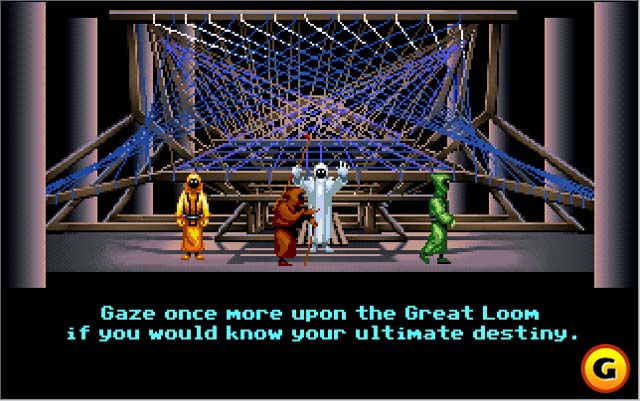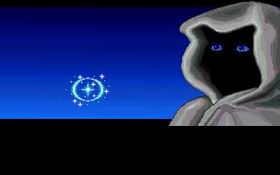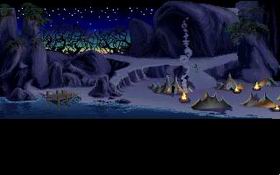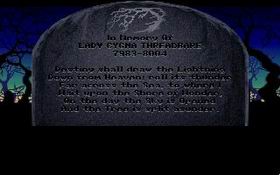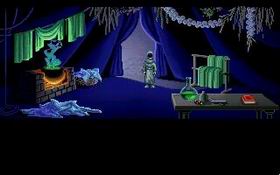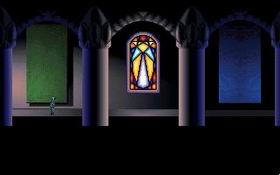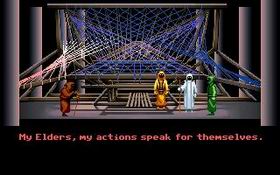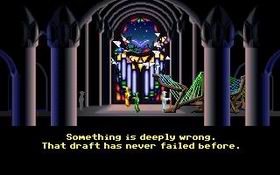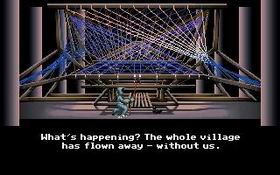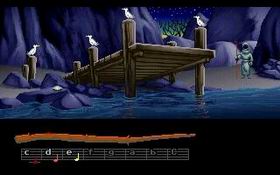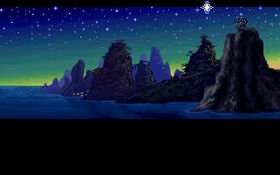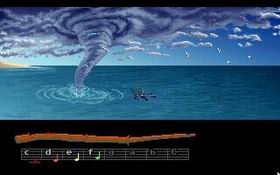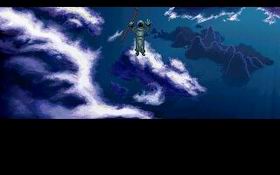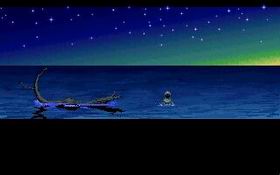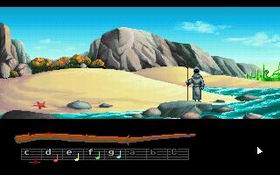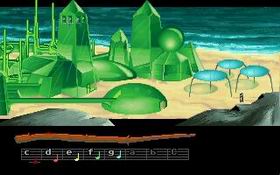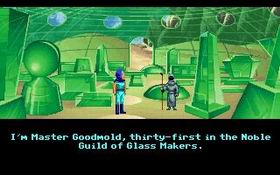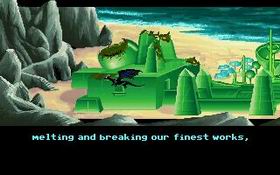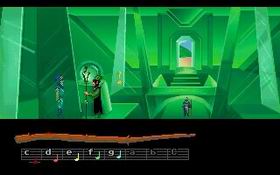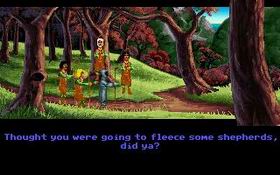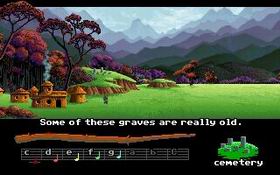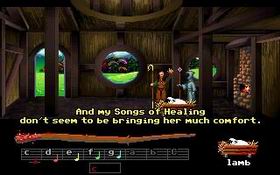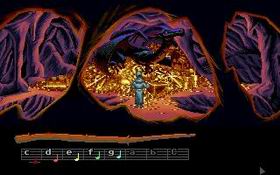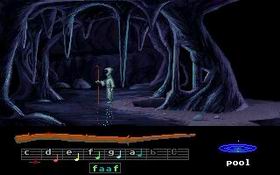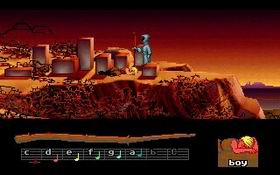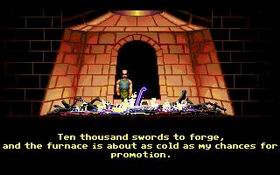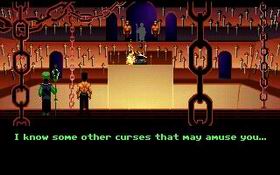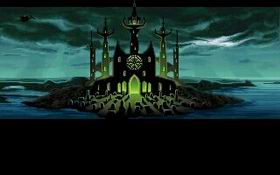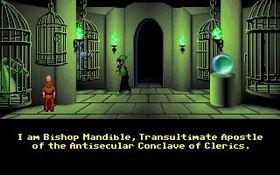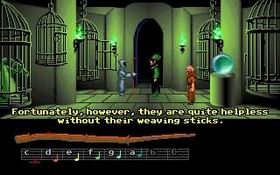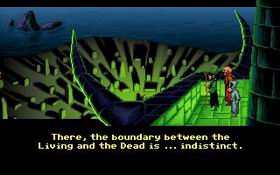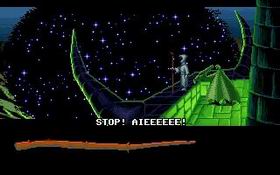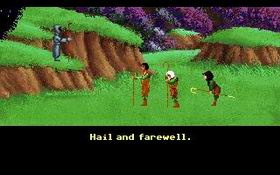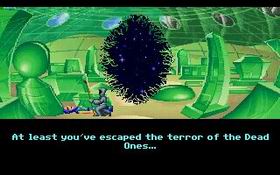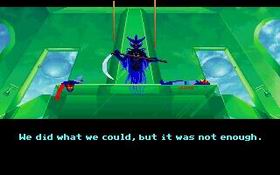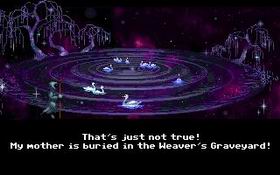
"Graphical Story" told with point and click interface.
http://gamespot.com/gamespot/features/pc/unsung_heroes/sec2_03.html
Loom Designer: Brian Moriarty Publisher: LucasArts Year: 1990
By 1990 LucasArts had established a reputation for creating quirky, beautiful adventure games, and Loom epitomized those traits. The game successfully broke many conventions of the genre by having no inventory system and no list of verbs to choose from to perform actions. Instead, the designers had opted for a more intuitive interface, where passing the mouse cursor over a usable object or interactive portion of the environment caused an icon of the object to appear in the corner of the screen. If an icon appeared and you clicked the object, the appropriate action was automatically carried out. This made the game somewhat easy, but it did wonders for the flow of the narrative since you didn't have to sit around for hours solving obscure puzzles.
Loom's linearity and simplistic interface let the designers focus on the game's most memorable aspect, which was its music-driven storyline. Much of the gameplay revolved around learning songs and playing them back on a musical staff you picked up at the beginning of the game. It was a beautiful way to handle what could have been a dull magic system, and it was fun just to experiment with different note combinations to see what worked. As the game progressed, more notes were added to the staff, making more-complex songs possible. On the highest difficulty level you had to play everything by ear, which added immensely to the challenge.
Loom was originally released on floppy disks, which weren't exactly suitable for a game that relied so heavily on multimedia. Eventually an enhanced version on CD-ROM was rolled out that improved the game in every way. The 16-color graphics were upgraded to stunning 256-color artwork that maintained a strong artistic theme throughout the game. An incredible Redbook-audio soundtrack was integrated, and a team of talented voice actors was brought in to record all the dialogue. The game even included a CD-enhanced version of the 30-minute audio tape bundled with the floppy disk package, which provided an intricate background story.
Although Loom was technically brilliant and very fun, it offered only a few hours of linear gameplay. It also had the misfortune of being released at about the same time as two other high-profile (and genuinely brilliant) LucasArts adventure games: Indiana Jones and the Fate of Atlantis and The Secret of Monkey Island. Combine that with the fact that the original release of the game was so inferior to the CD-ROM re-release, and it's easy to see why Loom didn't do well enough to warrant a sequel.
The game did see a revival when it was included in LucasArts Classic Adventures compilation, but LucasArts only packaged the 16-color floppy disk version (without the audio tape) in the box. If you ever find a CD version, snag it immediately and treat yourself to one of the most fascinating storylines ever created for a computer game.
http://myst.cafe24.com/gallery/la_loom_page1.htm
screengrabs

